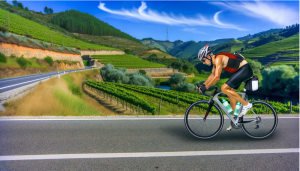Urban living presents a big challenge, that is limited green spaces. Yet, with thoughtful planning, even the smallest urban corner can become a sanctuary of sustainability and beauty. For instance, courtyard landscaping, a design approach that maximizes compact areas, has gained popularity in cities worldwide.
These spaces combine aesthetic appeal with practical features like water-efficient systems and functional layouts, contributing to better air quality, reduced heat, and a healthier lifestyle. Let’s dive into innovative and sustainable ideas to transform urban spaces.
Maximizing Compact Spaces
Urban gardening often begins with optimizing the little space you have. A balcony, rooftop, or unused corner can become a lush green haven. Vertical gardens, hanging planters, and stackable pots are great options for creating greenery in minimal space.
A study on urban planning found that adding vegetation to urban areas reduces stress and improves mental health, even when the green space is small. Start simple with easy-to-maintain plants like herbs or succulents. You can also combine functionality with design by using modular or foldable planters that can be rearranged as needed.
Native and Drought-Tolerant Plants
Native flora is essential for eco-friendly landscaping. They are adapted to the local climate, requiring less water, fertilizers, and maintenance. They also support local ecosystems by attracting pollinators like bees and butterflies.
Drought-tolerant plants like zinnia, lantana, and sage are ideal for urban environments where water is scarce. You can combine them with surfaces like gravel or mulch to minimize water runoff and enhance soil health.
Rainwater Harvesting and Smart Irrigation
We all know that water scarcity is a growing concern in urban areas, making efficient water management critical for eco-friendly landscaping. Rainwater harvesting systems can catch runoff water from rooftops and store it for use later or for irrigation purposes.
Additionally, smart irrigation systems, equipped with sensors to monitor soil moisture, can ensure that water is used only when needed. Combining rainwater harvesting with drought-tolerant vegetation creates a system that’s not only water-efficient but also highly sustainable.
Multi-Purpose Green Spaces
Urban landscaping isn’t all about aesthetics, but also about practicality. C&H Landscaping mentions that the outdoor area can become a beautiful and functional extension of your home.
Your courtyard can shine while serving as a multi-purpose space. From relaxation spots and community gardens to urban farms, anything is possible! Designing these areas with adjustable furniture, movable planters, and shaded corners can ensure they remain functional throughout the year.
Upcycled and Sustainable Materials
Sustainability in landscaping goes beyond plants. Recycled wood, bricks, or stone can create unique pathways, planters, and garden furniture. Upcycling reduces waste and gives your space a personal touch.
A 2024 research suggests that repurposing construction materials for urban landscaping can reduce greenhouse gas emissions, making it an effective way to contribute to a greener planet.
Boosting Biodiversity
We love to spot beautiful birds on trees, but as pollution rises and the quality of life decreases, it has become rare to enjoy such a sight. However, with eco-friendly landscaping, urban gardens can turn into biodiversity hubs.
You can add bird feeders, plants that are pollinator-friendly, or small water features. These attract birds, bees, and butterflies. These elements don’t just enhance the garden’s beauty but also support urban wildlife.
Energy-Efficient Lighting
Good lighting can elevate the ambiance of your urban green space while also being eco-conscious. Yes, it’s true! Solar-powered garden lights or LED fixtures are excellent options for this. These use much less energy than the traditional lighting we are used to.
You can arrange the lights strategically to highlight pathways, plants, or seating areas while keeping energy usage minimal. Look for motion-sensor lights to further reduce unnecessary energy consumption.
Emotional Benefits of Green Spaces
Beyond the physical transformation of spaces, landscaping also offers emotional benefits. According to a study, spending time in green spaces can effectively lower cortisol levels and reduce anxiety.
For example, courtyards and balconies can become secluded retreats in busy urban settings. This can provide residents with much-needed tranquility and time to be with themselves. Incorporating features like water elements, comfortable seating, and lush greenery can make the experience even better.
Getting Started
- Assess Your Space: Understand the size, sunlight, and soil quality of your urban garden.
- Choose Your Plants: Opt for native and low-maintenance varieties to keep it simple.
- Smart Features: Add drip irrigation, rainwater harvesting, or solar lights.
- Personal Touches: Use upcycled materials to reflect your style.
- Plan for Biodiversity: Include flowers, feeders, and water elements to attract wildlife.
Eco-friendly landscaping is not just a trend anymore, it’s almost a necessity for urban living. By including sustainable practices, you can create peaceful spaces that don’t just benefit the environment but also your well-being. Every step, no matter how small, contributes to a greener, healthier, and more colorful ecosystem.






